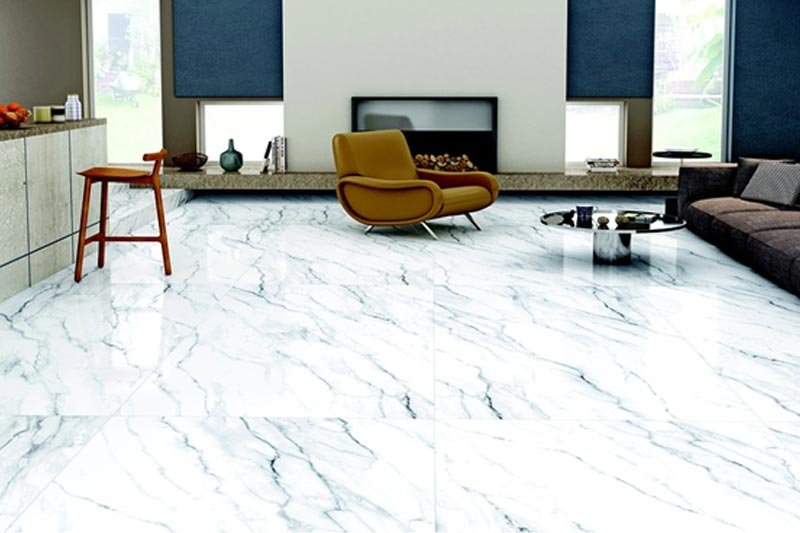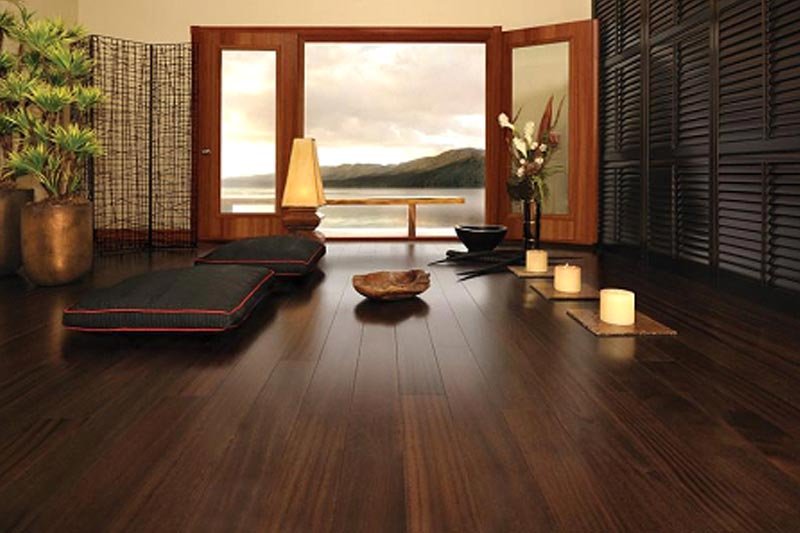How To Choose Healthy And Durable Floors : In choosing floors, some have the tendency to just consider factors such as budget-friendly, low maintenance and trendy. But health-conscious ones look for durable floors like plywood floors, bamboo floor, cork floors or ceramic tiles more than just attractive ones. They want their floors to be healthy and durable while giving their home its identity and style as well.
Choosing a durable and healthy floor ensures safe indoor air quality (IAQ). Knowing the estimated lifespan and the required maintenance to keep the floor in good condition can also help you make the right decision. Here is the list of floorings you can choose from:
-
Solid Hardwood Floors
Solid hardwood flooring comes either unfinished or pre-finished. Unfinished hardwood is usually cheaper but needs sanding and sealing after installation, unlike pre-finish where you can already walk on right after installation. Solid hardwood is easy to find and durable but they will start to scratch, discolor, or fade. Because it is raw, it can allow dust and dirt to accumulate and may also be susceptible to water penetration which can be damaging over time.
-
Engineered Hardwood Floors
Engineered hardwood floors are made up of several layers. On top is 100% natural wood, which comes from different species. The bottom layer is also made up of wood. In the middle is a core built from layers of plywood that crisscross in different directions. It creates a highly stable core that is designed to reduce the moisture problems associated with conventional hardwood. This is a great option for rooms like basements or over concrete slab and radiant heating systems. It does not swell or warps, making it very low maintenance. Unfortunately, lower layers often contain VOC and it is less durable compared to solid wood floors.
-
Wood Salvaged From River Bottoms
Submerging wood in deep water can lower the level of oxygen and reduce the rate of being rotten. The water pressure helps to force the sap to come out of the wood. This procedure will also result in richer color as compared to woods that are straight from the forest.
-
Bamboo Floors
Bamboo qualifies as grass, it grows and matures fasters than most hardwood supplying trees. It does not require the use of pesticides nor fertilizers. Bamboo floors are very strong. It is highly renewable and sustainable. It can be easily maintained by just sweeping. Vacuuming regularly can remove dust and other particles stuck in the gaps between planks. Sadly, some bamboos are harvested illegally or by irresponsible forestry practices. Also, make sure to purchase low VOC bamboo flooring.
-
Cork Floors
Cork comes from the bark of the cork oak tree and at times harvested from the living trees. For flooring products, bottle cork is ground up, pressed, and mold into sheets bonded with resins. Cork has soft surface best for rooms that require you to stand for a long period of time such as kitchen. It can also provide protection for kids and oldies who are prone to stumbling and falling. Cork is also a good insulator and sound absorber. On the other hand, it is susceptible to damage and sunlight can cause the cork’s color to fade.
-
Linoleum
Linoleum is very durable. With proper care, a linoleum floor can last 40 years or more. It is eco-friendly due to its biodegradable materials. It is safe and does not emit VOC. Linoleum requires little maintenance, needing only occasional sweeping and damp mopping. It is easy to install with plenty of colors and designs to choose from.
-
Concrete Floors
Concrete is hard and strong. It is low maintenance just a little sweeping and damp mopping is all that you need to keep them looking like new. Surface treatments such as acid stains, concrete stains, and paint made for concrete floors can turn a plain concrete to a stunning finish. Due to its hardness, your feet may feel sore after hours of standing on a concrete floor and things may easily break when accidentally dropped on this kind of floor.
-
Ceramic Tiles
 This kind of flooring is often used in kitchen and bathroom because it is water resistant. But many opt to use ceramic tiles for their living area and bedrooms too due to warm climates. If installed properly, it can be tough and difficult to crack. Replacing a broken tile is also quick and easy but styles quickly change so you might not find the exact design in the future.
This kind of flooring is often used in kitchen and bathroom because it is water resistant. But many opt to use ceramic tiles for their living area and bedrooms too due to warm climates. If installed properly, it can be tough and difficult to crack. Replacing a broken tile is also quick and easy but styles quickly change so you might not find the exact design in the future. -
Carpets
Carpet has the ability to give you style, comfort, and warmth that you are longing for but it can also attract mold, dust mites and any other airborne contaminants inside your home. Proper and regular cleaning is a must if you opt for this type of flooring.
Having these kinds of flooring to choose from, it is highly suggested to think first before making a decision. Bear in mind that your choice will eventually affect you and your family as well. Style, comfort, and durability may be considered in choosing a floor but still, health is an important element to ponder.
Related Videos about How To Choose Healthy And Durable Floors :
How to Choose Flooring
How To: Choose the right flooring for your home
Flooring 101: Your Guide To Selecting Flooring | The Home Depot
https://www.youtube.com/watch?v=rQqZHqLI6Gs
How to Choose a Color of Flooring : Wood Flooring
How to choose the right type of flooring for your home, from hardwoods to laminates to luxury vinyl
How To Choose Healthy And Durable Floors
best non toxic flooring, cork flooring, linoleum flooring, bamboo flooring, best flooring for house in india, flooring options, laminate flooring, which flooring is good for health in india,




